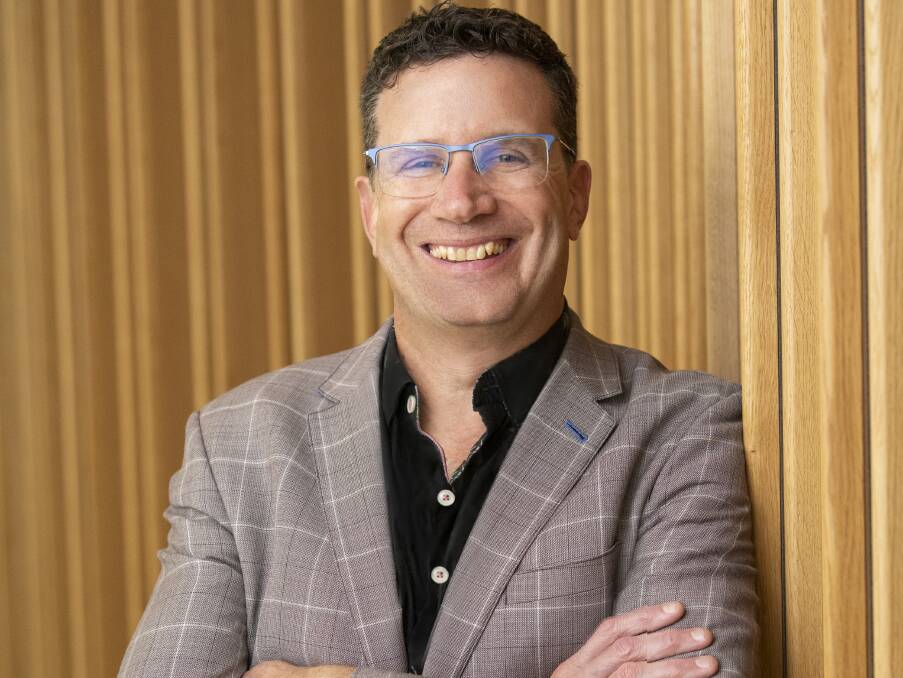How today's evolving retirement villages can benefit seniors and society

This is branded content for Keyton.
Australia is in a housing shortage crisis. Unless you're living a hermit lifestyle in a cave somewhere, it's a fact of life you wouldn't have been able to escape.
As governments and communities grapple with the serious issue, there's one opportunity that's being highlighted as a part of the solution - over-55s retirement communities.
It's already a fast-growing industry as increasing numbers of retirees become aware of the many benefits that downsizing into a well-designed lifestyle-focused community can offer.
From rattling around in a large family home with all the upkeep that comes with it, to starting afresh in a smaller home, with all of the maintenance done for you plus the support of a ready-made circle of friends, it's a transition being embraced by hundreds of seniors each year.
But freeing up family homes for new families is just one of the benefits the concept of retirement villages is delivering as it continues to evolve to suit the new generations of seniors making decisions about their perfect retirement and further still into their later years.
"Retirement living was initially the safety and security aspect, offering senior Australians an affordable option to downsize, move out of their home and into a secure environment where there were other like-minded people living, and where the maintenance is all done for them," said Nathan Cockerill, the managing director of one of Australia's most innovative over-55s community developers, Keyton.

"But now, as retirement living has evolved, it's more about that social aspect, wanting to move into a friendly community where they can be active and have that mental stimulation with lots of other people around, living a stress-free lifestyle.
"Typically the people moving into our retirement villages are moving out of their family homes, four bedroom homes where they've lived for maybe 30 or 40 years. They're struggling to maintain their home and it becomes a burden on them."
Healthier futures
Research shows that residents in retirement communities are on average happier and healthier - both physically and mentally, another significant benefit for both seniors and the wider community as healthcare and aged cared costs continue to rise and the population ages.
Data published by the Australian Institute of of Health and Welfare also showed that people entering permanent residential aged care from retirement communities tended to do so later than those who were living in regular homes.
"Retirement communities offer a unique housing option that enhances wellbeing and lifespan for older Australians, and delays - and can prevent - entry into aged care," said Daniel Gannon, the chief executive of the Retirement Living Council.
"And they can have reduced interactions with healthcare systems, primarily through fewer GP visits and shorter hospital stays."
Mr Gannon says the better health outcomes are the result of many aspects of living in retirement communities, from the increased activity, social engagement and personal support, to the easier access to allied health services and smart design of the homes and facilities.
"We know social interaction helps increase the sense of community, friendship and social identity among older Australians and in turn is associated with improved quality of life," he said.

"And more than 50 per cent of retirement communities feature wellbeing facilities or visiting health professionals like nurses and physiotherapist that helps minimise barriers to care Australians can face."
Wellbeing and connectivity
A focus on health and wellbeing is at the heart of the way Keyton designs and builds its retirement villages. It has recently expanded its wellbeing program following a successful 18 month pilot in seven villages. It's now been rolled out across a third of its 76 villages.
The program involves placing an allied health professional in a village, or working with the communities to create programs that resonate with the residents and contribute to their quality of life.
"Whether it's social, whether it's cognitive, financial or nutritional, it's providing them with the ingredients they need to live a happier, healthier life in our villages," said Mr Cockerill.
"In our just-built Ardency Kennedy Place we've got a health and wellbeing precinct inside the development where we have a health and wellbeing coordinator who will use the facilities we've built there - whether it's the Pilates room, the swimming pool to run water aerobics and the like. Plus we've got consulting rooms where physiotherapists, podiatrists, can provide services to our residents as well."
Keyton offers a range of styles of retirement communities to meet the needs and tastes of their customers including retirement villages, serviced apartments and its Ardency luxury residences.
It will soon also launch its first intergenerational community in Wollongong that features retirement living as well as aged care, childcare services and university facilities developed in conjunction with the University of Wollongong.
"The university can learn from our residents around history, around the challenges of ageing and our residents can continue with their learning at a university," Mr Cockerill said.
"It's enabling our older Australians to still be part of the community that they always thrive in and not become isolated as they age."
Whether you're after quiet country living, a sparkling coastal location or a buzzing urban lifestyle, you'll find it in one of Keyton's 76 retirement villages across Australia. To find out more visit keyton.com.au


